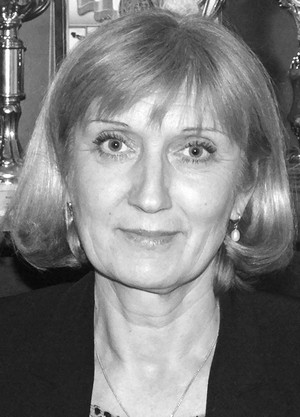University sport levels
Фотографии:
ˑ:
Teoriya i praktika fizicheskoy kultury №10 2016, pp. 56-59
UDC 796.092
Associate Professor S.Sh. Namozova1
Professor, Dr. Hab. Sh.Z. Khubbiev1
PhD L.V. Shadrin1
1Saint Petersburg State University, St. Petersburg
e-mail: khubbiev@gmail.com
University sports generally have the following hierarchical structure: (1) academic physical education curriculum; (2) athletic training in picked university teams; and (3) elite training in the national teams of the RF. The first level of the sport system is designed to: develop the basic motor skills; improve performance of the body systems and organs; form adaptive responses to the reasonably controlled health-improvement loads; correct functional disorders in the cardiorespiratory, muscular, nervous and other systems and in the mental and intellectual performance drawbacks. The health improvement physical activity will be limited by 4 hours per week, with intensities within 50-80% of the MOС (maximal oxygen consumption) at the heart rates (HR) of 130-160 bpm. At the second training level, the university athletes’ activity will be designed as required by the education process cycles. High priority at this athletic training stage will be given to the mental training geared to fully mobilize the competitive potential, with the following goals: improve the students’ competitive fitness; optimize performance of the bodily systems and organs in due interaction with mental conditioning to attain the highest competitive fitness standards; further increase the adaptive capabilities in the competitive, educational, professional, communicational and social domains. Physical activity at this stage will come to 6-10 hours per week with the loads of 80-100% of the MOC at the heart rates (HR) of 170-180 bpm. At the third training level, the main goal will be to make the amateur athlete fit for elite sport competitions. For doing that, the following need to be done: expand and intensify the medical support service; and apply the relevant psychobiological and genetic test methods to control and forecast competitive performance and step up the amateur performance standards to make them as close as possible to the professional ones. Physical activity at this stage will come to at least 6-10 hours per week with the loads of 80-100% of the MOC at the heart rates (HR) of at least 170-180 bpm.
Keywords: education process, university sports, elite sports, adaptation, functional state, physical activity.
References
- Grigor'ev V.I. Upravlenie sistemoy studencheskogo sporta v novykh usloviyakh (Management of university sport system in new environment) / V.I. Grigor'ev // Uch. zapiski NGU im. P.F. Lesgafta. – 2013. – № 3 (97) – P. 47-52.
- Ivanova L.A Studencheskiy sport kak sport vysokikh sportivnykh dostizheniy (University sport as elite sport) / L.A. Ivanova, O.A. Kazakova // Koncept. – 2014. – № 10 (October). – ART 14273. – 0,4 p. l. – URL: http://e-koncept.ru/2014/14273.htm].
- Namozova S.Sh. Vliyanie regulyarnykh zanyatiy fizicheskoy kul'turoy na funktsional'noe sostoyanie organizma studentov (Influence of regular exercises on student's functional state) / S.Sh. Namozova, Sh.Z. Khubbiev, R.S. Minvaleev et al. // Teoriya i praktika fiz. kultury. – 2015. – № 10. – P. 23-25.
- Namozova S.Sh. Monitoring funktsional'nogo sostoyaniya chlenov sbornykh komand v sisteme pedagogicheskogo upravleniya studencheskim sportom: otbor znachimykh kriteriev (Monitoring of functional state of national teams' members in university sport pedagogical management system: selection of relevant criteria) / S.Sh. Namozova, Sh.Z. Khubbiev, R.S. Minvaleev, L.V. Shadrin // Teoriya i praktika fiz. kultury. – 2016. – № 4. – P. 20-22.
- Poptsov V. Nekotorye aspekty sportivnoy fiziologii primenitel'no k vidam sporta na vynoslivost' (Some aspects of sport physiology as applied to endurance sports) / V. Poptsov // Lyzhnye gonki. – 1998. – № 1 (7). – P. 3-8.
- Prokopiev N.Y. Fiziologicheskie podkhody k otsenke funktsional'nykh nagruzochnykh prob v sporte (Physiological approaches to assessment of functional exercise tests in sport) / N.Y. Prokopiev, E.T. Kolunin, M.N. Gurtovaya, D.I. Mitasov // Fundamental'nye issledovaniya. – 2014. – № 2. – P. 146-150.
- Prudnikova N.A. Studencheskiy sport v Soedinennykh Shtatakh Ameriki i Rossii: perspektivy razvitiya (University sport in the United States and Russia: Development Prospects) / N.A. Prudnikova, A.B. Sharafeeva // Studencheskoe sportivnoe dvizhenie. Sostoyanie, problemy i perspektivy razvitiya: materialy Mezhdunarodnoy nauchno-prakticheskoy konferentsii (Student sport movement. State, problems and prospects of development: Proceedings of International research-practical conference / Rel. N.V. Soboleva). – Electron. data. – Krasnoyarsk: Sib. feder. un-ty, 2013. – P. 64-68.
- Smirnov M.R. Eshche raz k voprosu o porogovoy kontseptsii (ili skolko vsego «porogov» sushchestvuet na samom dele) (Once again on threshold concept (or number of "thresholds" actually existing) / M.R. Smirnov // Teoriya i praktika fiz. kultury. – 2001. – № 2. – P. 51-57.90.
- Solodkov A.S. Fiziologiya cheloveka. Obshchaya. Sportivnaya. Vozrastnaya: uchebnik. (Human Physiology. General. Sports. Developmental: Textbook. 2nd ed., rev. and sup.) / A.S. Solodkov, E.B. Sologub. – Moscow: Olimpiya Press, 2005. – 528 p.
- Suzdal'nitskiy R.S. Novye podkhody k ponimaniyu sportivnykh stressornykh immunodefitsitov (New approaches to interpretation of sport stress immune deficiencies) / R.S. Suzdal'nitskiy, V.A. Levando // Teoriya i praktika fiz. kultury. – 2003. – № 1. – P. 18-22.
- Khubbiev Sh.Z. Struktura individual'noy ozdorovitel'noy programmy po fizicheskoy kul'ture i tekhnologiya ee razrabotki (Structure of individual wellness program for Physical Education and its development technology) / Sh.Z. Khubbiev, S.Sh. Namozova, T.L. Neznamova // Teoriya i praktika fiz. kultury. – 2015. – № 3. – P. 27-30.
- Strausberg E. Sportivnaya nagruzka i serdechnaya deyatel'nost' (Exercise and cardiac activity) / E. Strausberg. – Moscow: Fizkul'tura i sport, 1974. – 232 p.
Received 03.06.2016 г.




 Журнал "THEORY AND PRACTICE
Журнал "THEORY AND PRACTICE